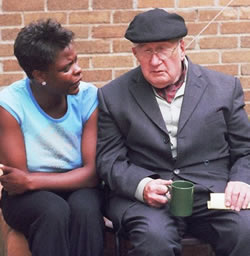 A recent report in the journal Science proposed a big change in how we understand the sympathetic and parasympathetic pathways of the autonomic nervous system (ANS).
A recent report in the journal Science proposed a big change in how we understand the sympathetic and parasympathetic pathways of the autonomic nervous system (ANS).In a nutshell, the new model stipulates that the outflow (efferent pathways) are divided into a cranial division and spinal division—not the craniosacral and thoracolumbar divisions that we learned (and that exist in all A&P textbooks):
Current model:
- Craniosacral division (parasympathetic outflow)
- Thoracolumbar division (sympathetic outflow)
New model:
- Cranial division (parasympathetic outflow)
- Spinal division (sympathetic outflow)
The authors lay out embryological and genetic phenotype evidence to show that the sacral components of the ANS outflow pathways are similar to sympathetic thoracic pathways—not to cranial parasympathetic pathways as we have long supposed.
But wait, you say, what about the parasympathetic control of the genitals, rectum, bladder? What about, well, all kinds of things that now seem to unravel? I suggest reading the rather brief and plainly written article in Science for the full answer.
However, a few quick points may reduce your blood pressure a bit—and perhaps pique your interest.
Quick points about the new ANS model
- Thoracic and sacral pathways share common embryologic development by location and when looking at transcriptional markers associated with neurotransmitters that differ from the developmental pattern of cranial pathways.
- Thoracic and sacral pathways have a ventral exit point from the spinal cord; cranial pathways have a dorsal exit point.
- The pelvic ganglion has been considered a "mixed" sympathetic/parasympathetic ganglion because it receives fibers from both the upper lumbar and sacral segments. But if the sacral pathways are sympathetic, the pelvic ganglion is clearly a sympathetic ganglion (not mixed).
- Analyses of transcription factors show that cells of the pelvic ganglia resemble those sympathetic ganglia and do not resemble cells in cranial ganglia.
- The supposed lumbar vs. sacral antagonism in the urinary bladder's detrusor muscle does not seem to hold up, with the lumbar inhibitory effects either not demonstrable in experiments or of questionable functional relevance.
- The effects on vessel dilation in genitals can be explained as a "continuity of action—rather than antagonism"
- The sacral pathway to the rectum seems to resemble sympathetic structure, not cranial (parasympathetic) structure.
What can we use from this in teaching undergraduate A&P?
- When covering the craniosacral/thoracolumbar scheme, consider mentioning this newly proposed model.
- Consider using this scenario to illustrate the dynamic nature of science. Perhaps discuss that long-held dogma is occasionally challenged using newer methods and ways of thinking.
- Consider discussing pros and cons of adopting the new model. For example, can evidence from mice extend to all vertebrates? Which is stronger, evidence for the current model or the new model? Which model is most useful in understanding principles of ANS regulation? A little critical thinking never hurt anyone (at least not much).
Want to know more?
The sacral autonomic outflow is sympathetic
- I. Espinosa-Medina, O. Saha, F. Boismoreau, Z. Chettouh, F. Rossi, W. D. Richardson, J.-F. Brunet. Science 18 Nov 2016: Vol. 354, Issue 6314, pp. 893-897 DOI: 10.1126/science.aah5454
- Peer-reviewed research report describing this discovery, Includes an updated version of the classic diagram of sympathetic and parasympathetic pathways.
- my-ap.us/2fNdcF3
Neural circuitry gets rewired
- Adameyko, I. Science 18 Nov 2016: Vol. 354, Issue 6314, pp. 833-834 DOI: 10.1126/science.aal2810
- Companion article to the report cited above, stating that "This finding provokes a serious shift in textbook knowledge, and, as with any fundamental discovery, it brings important practical implications..." and goes on to mention of a few of the implications (e.g., how to treat bladder dysfunction).
- my-ap.us/2gg9O8P
The Autonomic Nervous System. Part I.
- John Newport Langley. W. Heffer & Sons Ltd., Cambridge, 1921.80pp.
- Classic "primary source" that codified the modern concept of the ANS.
- my-ap.us/2fYHt3M
Gray's Anatomy ANS diagram
- Henry Gray. 1918 (online edition at Bartleby)
- Classic diagram by Henry Vandyke Carter of ANS pathways from an early edition of Gray's Anatomy.
- my-ap.us/2fYGMaT or my-ap.us/2gcAmaW


















